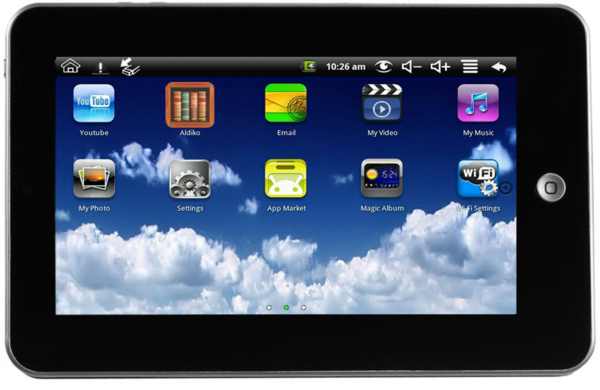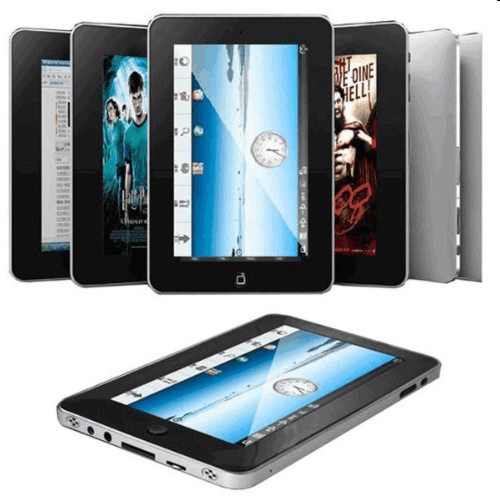| The New Tablet Ecosystem - cheaper is better |
| Friday, 25 February 2011 |
|
While the media chases the upmarket Android tablets like the Xoom made in the image of the iPad, there may be more opportunity for the average programmer in the cheaper devices and their new ecosystem.
The iPad is a wonderful glittzy beast but it's not for me and it's not for a lot of users. The reason is that it has too much bling. If you compare its price to a portable or a netbook you can't really claim it is over priced but this is to misunderstand the situation. The iPad has created a tablet ecology that we programmers can feed on but... it may well be the wrong ecology. Being an Apple product, the iPad is stylish and running iOS it is part of the whole iThing environment. This makes it easy to target the phone and tablet market with a single app - but the two form factors might not benefit from a unified targeting. Just look at the problems that Android is having at the moment with fragmentation brought about by the need to provide tablet-only facilities in version 3.0. The point is that tablets are different and we need to think about apps for tabs - but... the iPad is a distortion.
The beautiful Xoom
If you look at the rush of Android tablets coming onto the market at the moment you can't help but be struck by the polarisation in prices. There are $100, yes $100, devices that mostly run Android 2.1 and there are devices that cost $600 like the Galaxy Tab and $800 like the Motorola Xoom. The high end of the market attracts a lot of attention from the press which loves to salivate over the stylish features and gizmos. The low end of the market, mostly Chinese in origin, simply attracts derision because of the poor quality of construction and, typically, their use of unresponsive resistive screens. The whole coming tablet battle is seen as a conflict between the Android 3 and the iPod, i.e. it is essentially an upmarket battle. Now let me tell you a slightly different story. My Hi-Fi AndroidRecently my hi-fi (well medium-fi) stopped working and I needed a replacement. I decided to use my desktop machine instead, mainly because my entire CD collection has long been backed-up onto a networked disk. This sort of worked but having system sounds play over the speakers and losing the music every time the system crashed wasn't helpful. A better idea would clearly be a dedicated machine. I thought about netbooks but decided to try a cheap Android device. For around $100 I now have a touch screen tablet next to my keyboard and I use the standard music player to play my CD collection.
There are some problems - the audio connects via a jack socket and the CDs are stored on a USB disk drive. The first minor problem could be overcome by adding a bluetooth dongle and the second by setting up a media streaming device on the network. At the moment, however, it all works well enough for me not to waste time tinkering. That doesn't mean that I don't spend time speculating about the music center that is yet to come.... The point is that low cost Android devices complete with touch screens have lots of applications that the more expensive devices don't - because they are cheap enough to dedicate to a task. In fact my music playing Android isn't 100% dedicated to paying ripped CDs as it also has an Internet radio application that lets me listen to a station when I get bored picking music - but it still isn't being used as a general purpose computing device. In fact I'm currently contemplating "nailing" it to the wall behind my desk and so making it a very dedicated device indeed! Oh for a standardized mounting system... Introducing the xroom droidSo, let's think about this for a moment. There's the bedside Android that wakes me up, plays music, tunes into the radio station and let's me read the morning news if I really want to. Then there's the kitchen Android that does all the silly things that we have all been talking about for years - recipes complete with a timer and voice to tell me when the cake is cooked; the living room Android that once again handles the music, acts as a TV remote and even controls the lighting. Add to the mix some additional hardware typically found on more expensive devices and the possibilities increase. Even the cheapo device I'm using as a player has a built-in camera and an HDMI video output - it doesn't quite have the processor power to do justice to them but in the near future... So now think of ways to use the extra hardware. Video camera could produce a baby/security monitor, GPS is obvious and why not a video play back device to complete the media center. The more you think about it the more possibilities you start to see for low-cost Android systems doing semi-dedicated jobs.
The only problem is that currently there aren't the apps designed to do these jobs really well for the non-expert user. For example, the music player is OK but there is a lot of scope for a better graphics interface and a combined media center type approach.There are phone apps which do much of the job but in my opinion they don't do it right for a full size tablet - there is scope for a new entry. The new low cost Android ecosystem is another whole world of apps to explore. We don't need to chase the iPad to succeed. Further reading:Introduction to Android 2 application development Getting started with Android App Inventor Just one Android to rule them all (News) <ASIN:1934356565> <ASIN:1119991331> <ASIN:047077018X> <ASIN:0321743016> <ASIN:1118017110> <ASIN:0470936290> <ASIN:1118026438> |
| Last Updated ( Friday, 25 February 2011 ) |

 Not a Xoom but it works and costs less than $100
Not a Xoom but it works and costs less than $100 Pile em high use them everywhere!
Pile em high use them everywhere!